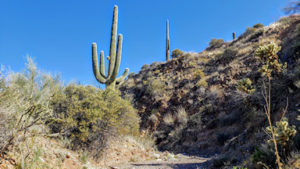Rich Gold Bearing Boulder
Rich gold bearing boulder found near an old gold mine.
The gold mine has hoards or high grade gold ore remaining all over the place. This is a high grade boulder with high grade gold, silver, copper, lead and zinc values found near an exposed gold deposit and gold mine.
Rich Gold Bearing Boulder

From Wikipedia, the free encyclopedia:
Volcanogenic massive sulfide ore deposits, also known as VMS ore deposits, are a type of metal sulfide ore deposit, mainly copper-zinc which are associated with and created by volcanic-associated hydrothermal events in submarine environments.
These deposits are also sometimes called volcanic-hosted massive sulfide (VHMS) deposits. The density generally is 4500 kg/m3. They are predominantly stratiform accumulations of sulfide minerals that precipitate from hydrothermal fluids on or below the seafloor in a wide range of ancient and modern geological settings. In modern oceans they are synonymous with sulfurous plumes called black smokers.
They occur within environments dominated by volcanic or volcanic derived (e.g., volcano-sedimentary) rocks, and the deposits are coeval and coincident with the formation of said volcanic rocks. As a class, they represent a significant source of the world’s copper, zinc, lead, gold and silver ores, with cobalt, tin, barium, sulfur, selenium, manganese, cadmium, indium, bismuth, tellurium, gallium and germanium as co- or by-products.
Volcanogenic massive sulfide deposits are forming today on the seafloor around undersea volcanoes along many mid ocean ridges, and within back-arc basins and forearc rifts. Mineral exploration companies are exploring for seafloor massive sulfide deposits; however, most exploration is concentrated in the search for land-based equivalents of these deposits.
The close association with volcanic rocks and eruptive centers sets VMS deposits apart from similar ore deposit types which share similar source, transport and trap processes. Volcanogenic massive sulfide deposits are distinctive in that ore deposits are formed in close temporal association with submarine volcanism and are formed by hydrothermal circulation and exhalation of sulfides which are independent of sedimentary processes, which sets VMS deposits apart from sedimentary exhalative (SEDEX) deposits.
There is a subclass of VMS deposits, the volcanic- and sediment-hosted massive sulfide (VSHMS) deposits, that do share characteristics that are hybrid between the VMS and SEDEX deposits. Notable examples of this class include the deposits of the Bathurst Mining Camp, New Brunswick, Canada (e.g., Brunswick #12); the deposits of the Iberian Pyrite Belt, Portugal and Spain, and the Wolverine deposit, Yukon, Canada.
#######
Visit our site to view real gold nuggets and prospecting equipment:
https://california-gold-rush-miner.us
Be sure to view our Gold nuggets for sale.
View our Natural Silver specimens, Visit our Old West Collections & Unique & Unusual page
Also see the most expensive type of gold nuggets, the Crystalline Gold Nuggets
Subscribe to our Youtube Arizona Gold Prospecting channel
1 Comment
San Diego real estate lawyers · September 21, 2022 at 11:52 pm
You actually make it appear so easy with your presentation however I to find this topic to be really one thing that I feel I’d by no means understand. It kind of feels too complicated and extremely huge for me. I am looking ahead to your subsequent post, I?¦ll try to get the hang of it!